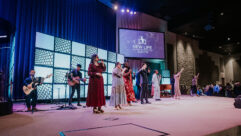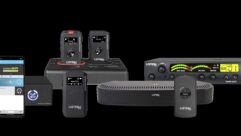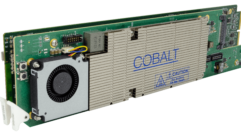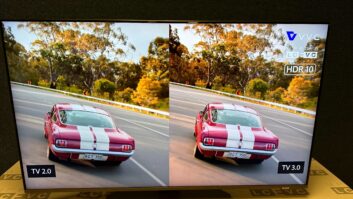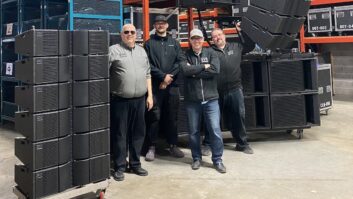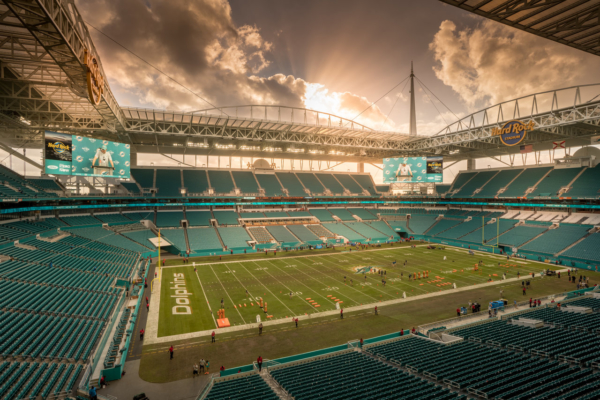
Networked audio in sports venues has seemed a fast-track proposition in recent years, but the reality is that digital venue sound remains largely segregated from a venue’s network infrastructure. That’s mainly a function of the entrenched nature of IT culture, which, to some extent, continues to view networked audio as a bit of a digital interloper.
Renamed Hard Rock Stadium last August, the Miami Dolphins’ home looks to create a template for venue sound on a converged network. A system designed and implemented jointly by the Dolphins’ IT and broadcast team, led by Tery Howard, and A/V systems integrator Diversified, is what Pete O’Neil, director, engineering, Diversified, calls “a truly” converged network. “We built the network infrastructure [for audio] off of the core switch infrastructure that lives in the stadium’s data center. That’s unique in sports venues at this point in time.”
The stadium hosts a 20-GB fully redundant fiber-linked network back to the cores, providing enough bandwidth to accommodate all audio requirements, including bowl sound and paging and emergency-notification systems, on separate channels but on the same broadband network infrastructure as other data streams, such as the venue’s IPTV and point-of-sale systems.
“It’s a paradigm shift in that the audio is tied to the data center, along with the other venue networks, instead of on a separate network infrastructure,” O’Neil explains. “And it’s end to end: when the network fiber comes into an amplifier–rack-room location, it comes to the switches as digital, and the signal is then sent the last few feet to the amps over IP, not as analog over copper.”
Because of that kind of emergent status, some IT managers prefer to keep audio segregated on their networks. O’Neil says that the Dolphins’ IT staff, headed by Howard and Director of Broadcast Operations Tomas Ruiz, instead sought to integrate audio on an equal basis with the rest of the stadium’s network traffic.
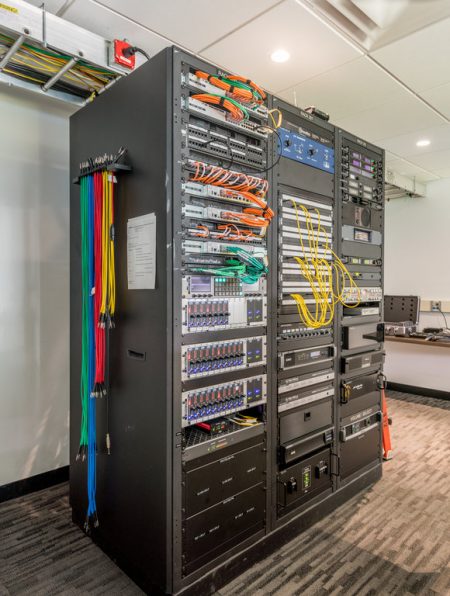
It required some extra effort. O’Neil notes that Cisco’s 3850 switch, which was introduced in 2015, as planning for the network got under way, turned out to have latency issues with audio, partly because of the enormous amount of other data traffic on the converged network. The IT team’s strong relationship with Cisco resulted in development of a firmware update that specifically addressed that issue. In fact, says O’Neil, the update is nicknamed “Miami.”
“They had the clout with Cisco to get that addressed,” he observes. “That was critical considering how [deeply] audio was going to be integrated into this network.”
The Hard Rock Stadium has significant benefits to show for the chances the team took. O’Neil cites flexibility (any input source can be added to the network at any point via a switch), signal quality (audio remains digital until the output stage of the amplifiers, just before the speakers, without any artifact- or latency-inducing conversions), scalability (the sound system can be expanded with the addition of new endpoints, the only limit being the network’s available bandwidth), and system-wide redundancy, which increases reliability.
WHY THIS MATTERS: Dan Daley does his usual excellent job of getting into the network details. It’s part 3 of a larger series that is also worth a read. -Cynthia Wisehart



